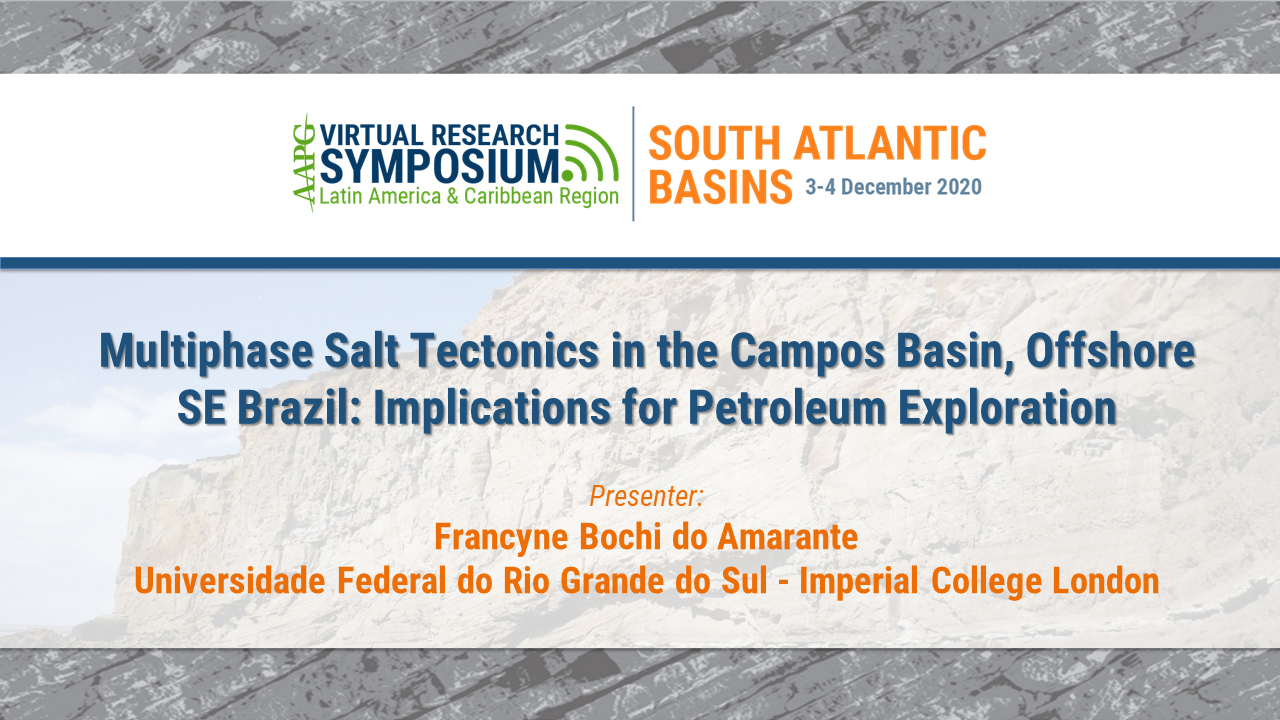
Summary
Authors: Francyne Bochi do Amarante, Universidade Federal do Rio Grande do Sul - Imperial College London (presenter); Christopher Aiden-Lee Jackson, Imperial College London; Leonardo Muniz Pichel, University of Bergen; Claiton Marlon dos Santos Scherer, Juliano Kuchle, Universidade Federal do Rio Grande do Sul
Salt-bearing passive margin basins offshore SE Brazil have been and remain attractive for hydrocarbon exploration and production. In the Campos Basin, major reservoir types include post-salt turbidites, which are located in structural traps related to thin-skinned faulting above salt pillows and rollers. Classic models of gravity-driven salt tectonics commonly depict kinematically linked zones of deformation, characterised by updip extension and downdip contraction, separated by a weakly deformed zone associated with downdip translation above a relatively smooth base-salt surface. We use 2D and 3D seismic reflection and borehole data from the south-central Campos Basin to show that this does not adequately capture the styles of salt-detached gravity-driven deformation above relict, rift-related relief. We show that base-salt ramps can create local stress fields and complex structures in the translational zone, with these overprinting the regional, margin-scale patterns of deformation. These structures include c. 20-30 km wide ramp-syncline basins and contractional salt anticlines that were later extended and faulted. This multiphase deformation relates to changes in the volume and velocity of the salt crossing seaward-dipping base-salt ramps, with the most complex structures forming in response to translation of salt and overburden across two ramps. We show that salt-cored anticlines in the translational domain can create large traps that may contain post-salt turbidites. Later extensional faulting of these anticlines can provide conduits for oil migration from the underlying source rocks, as well as define reservoir compartments.
Bio:
Francyne Bochi do Amarante, Universidade Federal do Rio Grande do Sul, Imperial College London
Francyne earned a BSc in Geology at Universidade Federal do Rio Grande do Sul (UFRGS), Porto Alegre, Brazil; a MSc in Geosciences with focus on Stratigraphy and Sedimentology at UFRGS; and currently is a PhD Candidate in Geosciences with focus on Basin Analysis at UFRGS; she also is a Visiting Researcher at Imperial College London during her PhD researching salt tectonics.
Her professional experience includes research projects funded by Shell and Petrobras at UFRGS.
Please log in to view or purchase the video presentation